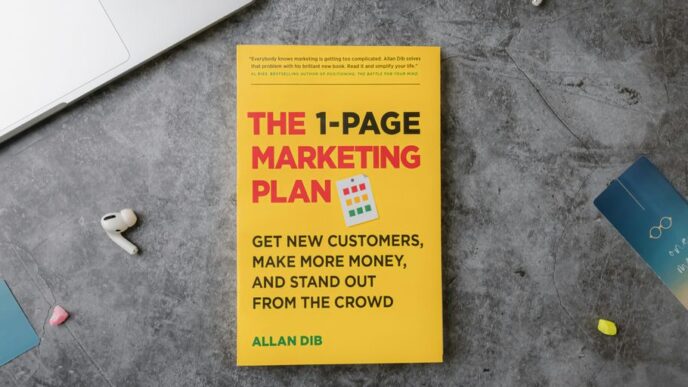Attention all business owners and marketers! Are you considering radio advertising as part of your marketing strategy? Before you dive in, it’s important to understand the true cost of radio advertising. From production costs to airtime fees, there are a lot of factors that can impact your budget. In this comprehensive guide, we’ll take a deep dive into the world of radio advertising and break down all the costs involved so you can make an informed decision about whether or not it’s right for your business. Get ready to learn everything you need to know about the true cost of radio advertising!
Introduction
As a business owner, you’re always looking for ways to get people to know your company. Advertising is one way to do that, and radio can be a cost-effective way to reach potential customers. But what is the true cost of radio advertising?
In this comprehensive guide, we’ll break down the costs of radio advertising and show you how to make the most of your budget. We’ll also give you some tips on how to measure the success of your radio ads so you can make sure they’re worth the investment.
Radio advertising costs can vary widely depending on a number of factors, including the size of the market, the time of year, and the type of station you choose. But in general, you can expect to pay anywhere from $200 to $5,000 per week for a 30-second spot on a local radio station.
Of course, that’s just the cost of airtime. You’ll also need to factor in the cost of producing your ad, which can range from a few hundred dollars to several thousand dollars depending on whether you create the ad yourself or hire a professional agency.
So how do you know if radio advertising is worth the investment? Here are a few things to keep in mind:
How much does radio advertising cost?
Radio advertising costs can vary greatly depending on the station, time slot, and other factors. However, there are some general principles that can help you determine how much radio advertising will cost your business.
The first thing to consider is the size of your market. The larger your market, the more expensive radio advertising will be. This is because stations in large markets typically have higher rates than those in smaller markets. Additionally, you’ll need to factor in the specific demographics of your target audience when considering which stations to advertise on. For example, if you’re trying to reach a young audience, you’ll likely want to advertise on a station that plays contemporary music.
Another important factor to consider is the time slot you choose for your ad. Ads that run during peak listening times (drive time in the morning and evening) will be more expensive than ads that run during off-peak times. However, you may be able to get a discount if you purchase multiple spots or commit to running your ad for a certain period of time.
Keep in mind that radio advertising is not a one-time expense. In addition to the cost of airtime, you’ll also need to pay for production costs (if you don’t already have an audio spot) and any additional fees charged by the station (such as sponsorship fees). To get an accurate estimate of how much radio advertising will cost your business, it’s best to consult with a media buying agency.
Calculating the Cost of Radio Advertising
To calculate the cost of radio advertising, you need to consider the following factors:
1. The cost of the ad itself This includes the cost of production and airtime.
2. The size of the audience you are reaching This is determined by the station’s ratings.
3. The demographics of the audience you are reaching This includes things like age, gender, income, etc.
4. The geographic area you are reaching This includes things like city, state, or region.
5. The time of day you are running your ad This will affect both the size and demographics of your audience.
6. The length of your ad spot Radio ads can range from 15 seconds to 2 minutes in length.
Factors That Impact Radio Ad Costs
There are a number of factors that impact radio ad costs. The first is the size of the market. Radio advertising rates are generally higher in larger markets than in smaller markets. The second factor is the time of day that the ads will air. Ads that air during daytime hours tend to be more expensive than those that air during nighttime hours. The third factor is the day of the week that the ads will air. Ads that air on weekends tend to be more expensive than those that air during the week. The fourth factor is the type of station that the ads will air on. Ads that air on news or talk stations tend to be more expensive than those that air on music stations. The length of the ad also impacts the cost, with longer ads generally costing more than shorter ads.
Different Types of Radio Ads and Their Costs
Radio advertising comes in many different forms, each with its own set of benefits and costs. Here is a rundown of the most common types of radio ads and their associated costs:
1. Sponsorships: Sponsor a radio show or segment for a set fee. This type of ad allows you to have your brand name mentioned throughout the program, as well as have a short commercial played at the beginning or end of the show. Costs can range from a few hundred dollars to several thousand dollars per week, depending on the popularity of the program.
2. Commercials: Produce a short radio spot that airs during regular programming. Rates vary depending on the length of the commercial, time slot, and station, but typically range from $50 to $500 per airing.
3. Public Service Announcements (PSAs): Create a PSA to promote a cause or issue important to your organization. PSAs are typically aired for free, but there may be some production costs associated with creating the spot.
4. On-Hold Messaging: Advertise to customers while they are on hold by recording a short message that plays when they call your business. On-hold messaging rates vary depending on the length of the message and how often it is played, but generally start around $50 per month.
Strategies for Maximizing ROI from Radio Advertising
Radio advertising can be a great way to reach new customers and grow your business. But like any other marketing channel, it’s important to set a budget and measure your return on investment (ROI). Here are some tips for getting the most out of your radio ad spend:
1. Define your target audience.
Who are you trying to reach with your radio ads? This will help you determine where to place your ads and what type of messaging will resonate with your target listeners.
2. Set a budget.
How much can you afford to spend on radio advertising? Make sure you leave room in your budget for other marketing initiatives, such as online advertising, events, and public relations.
3. Buy ad time wisely.
Radio stations offer different rates for ad time depending on when the spot airs. For example, ads that air during morning or evening drive time (when more people are listening) will cost more than spots that air during the daytime or overnight hours. Choose times that make sense for your target audience and budget.
4. Create a great ad.
Your radio ad should be attention-grabbing, well-written, and relevant to your target audience. Don’t try to cram too much information into a 30-second spot; focus on one key message that you want listeners to remember. And make sure your contact information is included so listeners can easily get in touch with you after hearing
Conclusion
Radio advertising can be a great way to reach potential customers and build brand awareness. But, as we have discussed in this guide, there are many factors that you need to consider when budgeting for radio ads. We hope this guide has provided you with the necessary information about the cost of radio advertising so that you can make an informed decision on whether or not it is right for your business. With careful planning and research, radio advertising could be a key part of your marketing strategy.











